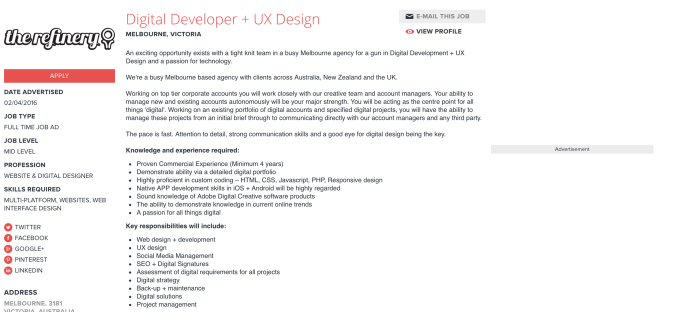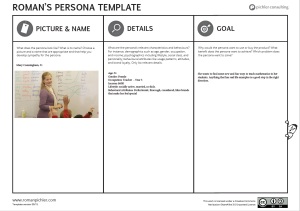The steps and skill-set required to be successful in UX

Source Image: Onwardsearch.com An analysis on the UX designer’s job description and salary expectations
Making the decision to study a Digital Media degree was a strategic one. After a restructure at the company I was working at, I was offered a job working with our business development team and though this would have been a great opportunity, it wasn’t right for me.
I took the redundancy on offer and took stock of what I wanted from the next five-to-ten years of my career. I knew a considerable amount about production management, understanding product creation life-cycles, scheduling and budgeting and I wanted to continue to work in a creative field, but what I lacked were some of those technical skills.
I didn’t know HTML, my design skills were self taught and my understanding of interaction had come from collaborating with more senior members of my team. I knew it was time to up-skill and the best option seemed to be full-time study.
My goal after completing my study is to work in production again, but with more of a focus on digital design. I’m also considering becoming a UX designer.
Looking into these type of jobs, I wanted to see what skills were desired to understand what were I needed to develop and what advantages I may already hold over the competition.
After finding a couple of relevant roles, I found similarities in regards to the skills required.
- Web Design (HTML, CSS)
- Adobe Creative suite
- Project Mangement
- Interface design

UX and Digital Developer role available on theloop.com.au

One of the UX roles, found on theloop.com.au
Knowing what good design looks like
Understanding good design principles and being able to articulate the decisions made to stakeholders and clients is important. By learning design fundamentals, interaction design as well as exploring areas like animation, 3D and graphic design I feel I’ll be able to communicate with authority and lead design teams with much more confidence and clarity.
Being competent in using the Adobe suite of products is a required skill-set for a number of the UX jobs I found. Whilst I’m quite good at creating visions and rationalising concepts, executing this ideas can sometimes prove a challenge. Becoming more competent in the Adobe suite and other design tools will be critical to my success.
So, treating this degree like a full-time job and approaching assessments like projects will ensure I get the most of out of this experience.
Web Design language
Of nearly all of the UX jobs I looked at, understanding HTML and CSS was highly regarded. Others were also looking for people who understand Jquery and PHP. When it comes to these languages, I have a long way to go. Though I understand the basics of HTML and CSS, I am yet to design a site that truly excites me with its layout, functionality and information structures. Again, I believe working through this degree and networking with people who are more skilled in these areas will put me in a good place to find employment as a UX designer in the coming years.

